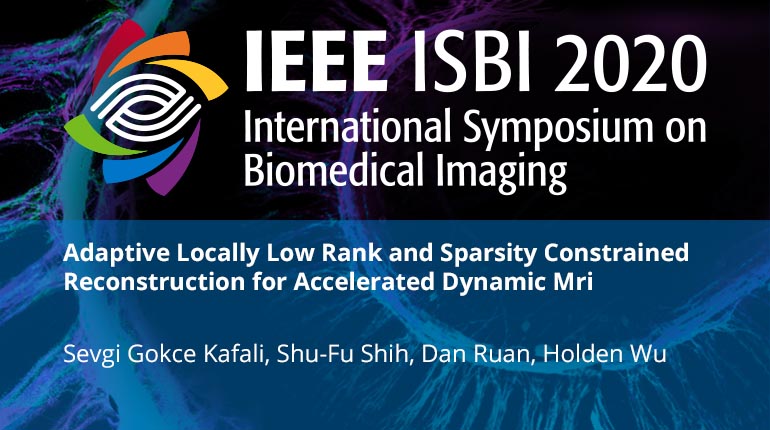
Already purchased this program?
Login to View
This video program is a part of the Premium package:
Adaptive Locally Low Rank and Sparsity Constrained Reconstruction for Accelerated Dynamic Mri
- IEEE MemberUS $11.00
- Society MemberUS $0.00
- IEEE Student MemberUS $11.00
- Non-IEEE MemberUS $15.00
Adaptive Locally Low Rank and Sparsity Constrained Reconstruction for Accelerated Dynamic Mri
Globally low rank and sparsity (GLRS) constrained techniques perform well under high acceleration factors, but may blur spatial details. Locally low rank and sparsity (LLRS) constrained techniques preserve the spatial details better, but are sensitive to the size of the local patches. We propose a novel adaptive locally low rank and sparsity (ALLRS) constrained reconstruction for accelerated dynamic MRI that preserves the spatial details in heterogeneous regions, and smooths preferentially in homogeneous regions by adapting the local patch size to the level of spatial details. Results from in vivo dynamic cardiac and liver MRI demonstrate that ALLRS achieves improved sharpness as well as peak signal-to-noise ratio and visual information fidelity index with suppressed under-sampling artifacts for up to 16-fold undersampling.
Globally low rank and sparsity (GLRS) constrained techniques perform well under high acceleration factors, but may blur spatial details. Locally low rank and sparsity (LLRS) constrained techniques preserve the spatial details better, but are sensitive to the size of the local patches. We propose a novel adaptive locally low rank and sparsity (ALLRS) constrained reconstruction for accelerated dynamic MRI that preserves the spatial details in heterogeneous regions, and smooths preferentially in homogeneous regions by adapting the local patch size to the level of spatial details. Results from in vivo dynamic cardiac and liver MRI demonstrate that ALLRS achieves improved sharpness as well as peak signal-to-noise ratio and visual information fidelity index with suppressed under-sampling artifacts for up to 16-fold undersampling.
 Cart
Cart Create Account
Create Account Sign In
Sign In





